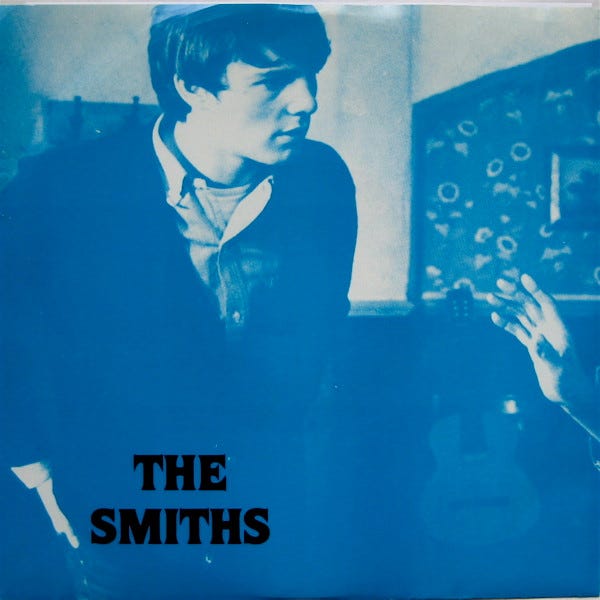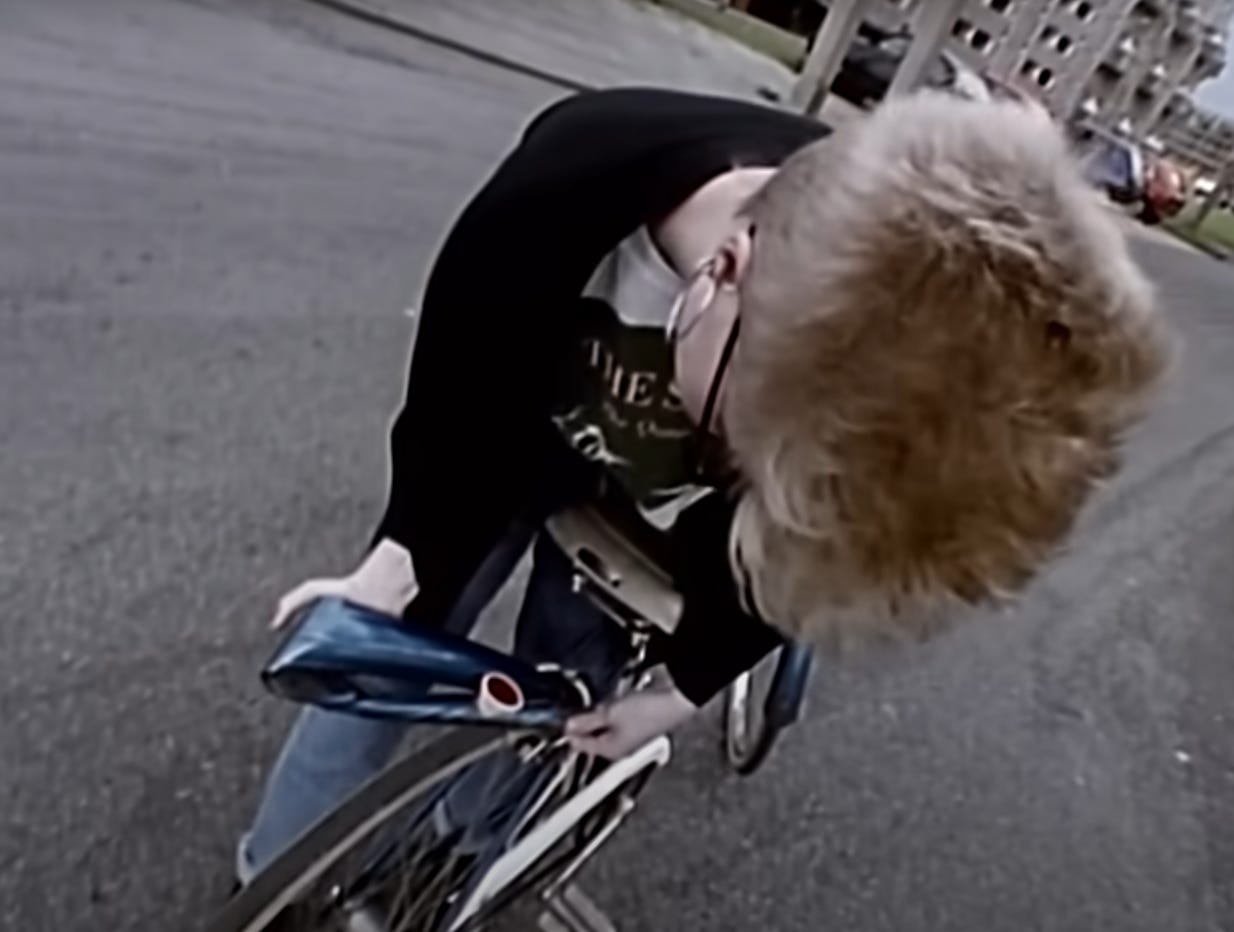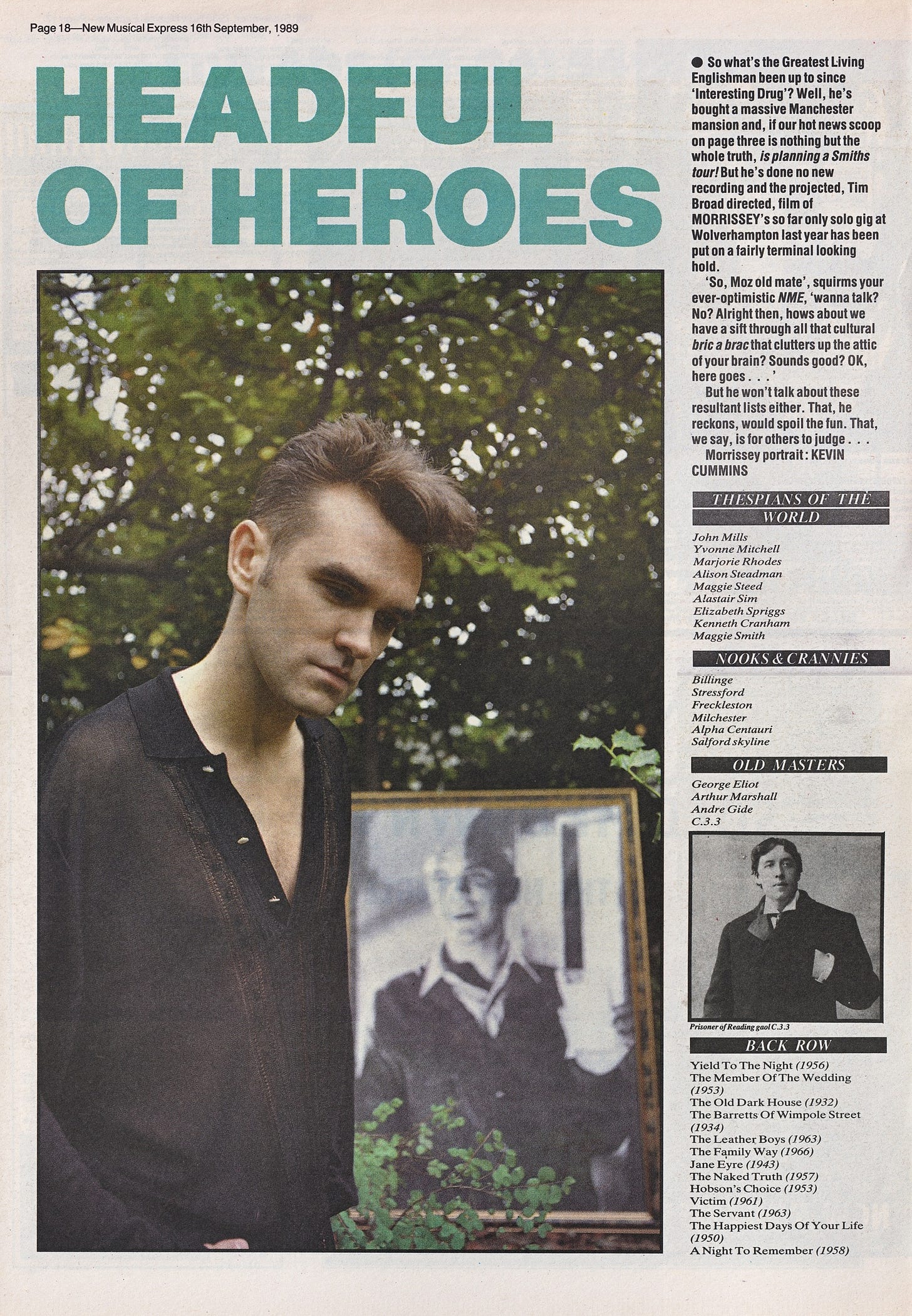"Stop Me If You Think You've Heard This One Before"
“Stop Me If You Think You’ve Heard This One Before” is the fifth track on Strangeways, Here We Come, the Smiths’ final studio album. It was recorded during the Strangeways sessions in March and April 1987 at Wool Hall Studios in Bath, England, and was produced by Stephen Street with input from both Johnny Marr and Morrissey.
Initially intended as the second single from Strangeways—following “Girlfriend in a Coma,” which was released on August 10, 1987—the song’s release was halted due to controversy. The BBC objected to the lyric referencing mass murder (“…plan a mass-murder”) in the aftermath of the Hungerford massacre, a tragic shooting that occurred in August 19871. In response to the BBC’s refusal to play the song, Rough Trade Records ultimately decided to cancel its release as a single in the UK.
"I desperately desperately wanted ['Stop Me If You Think You've Heard This One Before'] to be released. Rough Trade sent white labels along to Radio One but they said they would never under any circumstances play it because of the line about mass murder. They said people would've instantly linked it with Hungerford and it would've caused thousands of shoppers to go out and buy machine guns and murder their grandparents. I think Rough Trade should've released 'Death Of A Disco Dancer' instead just to be stroppy."2 -Morrissey
Whether Rough Trade was truly concerned about the BBC’s refusal to ever play “Stop Me If You Think You've Heard This One Before”, or whether (more likely) Geoff Travis (the label’s owner) was simply lukewarm about the song from a commercial perspective, is open to some debate, as Travis had by this point a track record of meddling in which Smiths songs should be released as singles. For example, in 1984 Travis relegated “How Soon Is Now?” to the B-side of the “William, It Was Really Nothing” 12-inch single on the grounds that the song was “too unrepresentative” of the Smiths’ sound.
Morrissey indirectly references the latter as the underlying motive in Autobiography:
“…Rough Trade decide against releasing ‘Stop Me If You Think You've Heard This One Before’ due to the lyric’s reference to ‘mass murder’, and I argue that it is surely a bit late in the day to worry about offending anybody.
‘Yes, but radio won’t play it,’ offers Geoff [Travis], his cadaverous smile as colorless as an Islington sky.
‘But they don’t ever play ANYTHING anyway!’ I choke, finally ready for the taxidermist.”
A compromise of sorts was reached: “Stop Me If You Think You've Heard This One Before” was released as a single in the United States, Australia, and several European markets in late October 1987 — but not in the United Kingdom. In its place, Rough Trade issued “I Started Something I Couldn't Finish” as the second single from Strangeways in the UK in early November 1987.
The cover art for the “Stop Me If You Think You've Heard This One Before” single features a photo-still of English actor and singer Murray Head3 from the 1966 film The Family Way.4
Over the years, Johnny Marr has described in several interviews how he composed the music for the song, shedding light on the innovative process behind its distinctive sound. Marr specifically used a 12-string Gibson ES-335 as:
“I wanted the electric guitar parts a lot less layered and with a lot more weight, which you can hear on I Started Something I Couldn't Finish. The stuff that wasn't acoustic was mainly led by my 335 12-string; in fact, a lot of the songs - I Started Something..., Paint A Vulgar Picture and Stop Me If You've Heard This One Before - were written on that guitar. It gave a really big sound. I wanted to make sure my main guitar parts really counted and stayed on the record.."5
Like a musical mad scientist, Marr devised a distinctly original method to create the sound heard on the track:
"I'm trying to be open to any ideas, so long as they're fairly melodic and they relate to what the singer is singing. I'll try any trick. With The Smiths, I'd take this really loud Telecaster of mine, lay it on top of a Fender Twin Reverb with the vibrato on, and tune it to an open chord. Then I'd drop a knife with a metal handle on it, hitting random strings. I used that on 'Stop Me If You Think You've Heard This One Before' for the big 'doi-ngs' at the start."6
There is ongoing debate over which Smiths song features Johnny Marr’s first-ever guitar solo. The author himself has identified it as being contained on “Paint A Vulgar Picture” (see my post dated April 26, 2025)7 while others argue that it is found on “Shoplifters of the World Unite”. Johnny Marr has alluded to “Stop Me If You Think You’ve Heard This One Before” as containing his first solo guitar as he explained in an interview with Guitar Player magazine:
"I was really pleased that the first solo as such on a Smiths record was one you could sing... I liked the melody at the end of 'Stop Me If You've Heard This One Before,' but it just felt a little too accomplished. I wanted it to sound like a punk player who couldn't play, so I fingered it on one string, right up and down the neck. I could have played it with harmonics or my teeth, or something clever, but the poignancy would have gone out of the melody."8
Morrissey’s lyrics in “Stop Me If You Think You’ve Heard This One Before” are laced with bitter humor and emotional fatigue, revisiting familiar thematic territory from the Smiths’ catalogue—romantic regret, inner turmoil, and mordant self-deprecation. Yet, they’re delivered with such dark comic flair and vivid imagery that the result feels anything but formulaic.
The recurring refrain—“Stop me if you think that you've heard this one before”—underscores Morrissey’s cynicism. Emotional pain, in his telling, has become not only cyclical and predictable but also performative.
Veering between sardonic understatement (“only slightly less than I used to”) and flashes of near-comic violence (“he broke my spleen”), Morrissey illuminates a world where vulnerability and brutality uneasily coexist. Beneath the irony that threads through the lyrics lies a quiet resignation—“Nothing's changed”—suggesting that the damage is not only lasting, but has become a defining feature of his life, part of a destructive cycle that endlessly repeats. The lyrics are tragic, yet delivered with a deadpan wit and dark humor that is unmistakably, and inimitably, Morrissey.
A promotional music video for the song was made at the urging of Geoff Travis:
“‘If you want the singles from Strangeways to succeed, then you should quickly take part in these promo videos,’ says Geoff, as he encircles the open grave. ‘We have a budget of twelve thousand pounds.’
Director Tim Broad steps in to make sense of it all, hotch-potching two videos for both Girlfriend in a Coma and Stop Me If You Think You’ve Heard This One Before. The results for both are frustratingly unwatchable, although Tim did his best with such a mealy-mouthed budget.”9
By the time filming took place in October 1987, the Smiths had already disbanded. In the video for the song, Morrissey cycles through Manchester and Salford beneath a gray, overcast sky, trailed by more than a dozen look-alike fans recruited through a fanzine called Smiths Indeed. The concept, devised by Morrissey, was to lead the group past key Smiths landmarks in a kind of farewell tour through the urban landscape that had shaped the band’s identity.
The music video opens with a striking image: a cyclist unceremoniously rides over a sodden poster of Shelagh Delaney, emblazoned with the words “THE SMITHS.”
In another shot, a dejected Morrissey look-alike walks slowly down a sidewalk, head bowed, a crumpled poster in hand with “Smiths” clearly visible.
This is then followed by another look-alike attempting to mend the rear rack on her bicycle, which has been bent out of shape.
Each of these scenes serve as pointed metaphors for the dissolution of the band. Indeed, the video feels more like a requiem for the Smiths than a promotional vehicle for the single.
Tellingly, we see Morrissey and his group of look-alikes cycling through the deserted avenues and side-streets of boarded-up council estates — a poignant image of something that has passed. The vacant buildings evoke the fading of the Smiths, but also hint at renewal, or perhaps reinvention. Rather than signaling an end, these images suggest a threshold — a quiet pivot toward what comes next, as Morrissey cycles steadily down the lane.
Posters of Shelagh Delaney and Oscar Wilde — two of Morrissey’s enduring literary heroes — appear throughout the music video, serving as a subtle final indulgence from the singer.
The exact same footage was reused in the promotional music video for “I Started Something I Couldn't Finish,” the aforementioned alternate single released in the United Kingdom instead of “Stop Me If You Think You’ve Heard This One Before.”
Watch Tim Broad’s music video for the song here:
The Hungerford massacre was a spree shooting in Wiltshire and Berkshire, England, which occurred on August 19, 1987. 27-year-old Michael Ryan shot and killed sixteen people before killing himself. No firm motive for the killings has ever been established.
Morrissey, NME, February 13, 1988
Born Murray Seafield St George Head in London in 1946. Head has appeared in a number of films, including a starring role as the character Bob Elkin in the BAFTA award winning and Oscar-nominated 1971 film Sunday Bloody Sunday. As a musician, Head is most recognised for his international hit songs "Superstar" (from the 1970 rock opera Jesus Christ Superstar) and 1984’s "One Night in Bangkok”.
In the Meat Is Murder tour program (1985), Morrissey named Marjorie Rhodes as a favorite for her performance in The Family Way. Her portrayal of a strong Northern matriarch embodies the working-class sensibility and nostalgic British cinema that Morrissey so often idealizes.
Morrissey also mentioned the film as one of his favorites in a feature in the NME titled Headful Of Heroes: Back Row from September 1989.
Bits of dialogue from The Family Way appear in the lyrics of two songs by the Smiths, and at least one Morrissey solo track. The word “back-scrubber” and the line “It’s a funny thing, nature—it always finds a way” are found in “Half a Person” and “Stretch Out and Wait,” respectively. The line “I just want to see the girl happy” is echoed in Morrissey’s solo song “I Just Want to See the Boy Happy” from his Ringleader of the Tormentors album.
The film is about newlyweds Jenny (Hayley Mills) and Arthur Fitton (Murray Head), who struggle to consummate their marriage while living with Arthur’s parents in a cramped Lancashire home. Humiliation, lack of privacy, and clashing schedules strain their relationship, while gossip and family tensions add to the pressure. A heated argument finally breaks the emotional barrier between them. With support from Arthur’s father, Ezra (John Mills), they plan a belated honeymoon and move toward a more independent life together.
The Guitar Magazine. January, 1997
Guitar Player, January 1990
https://tomfpapp.substack.com/p/paint-a-vulgar-picture-part-ii
Guitar Player, January 1990
Morrissey. Autobiography. Penguin Books, 2013, p. 220.











